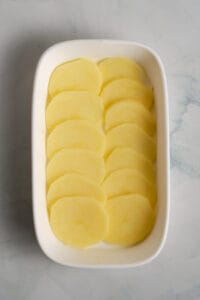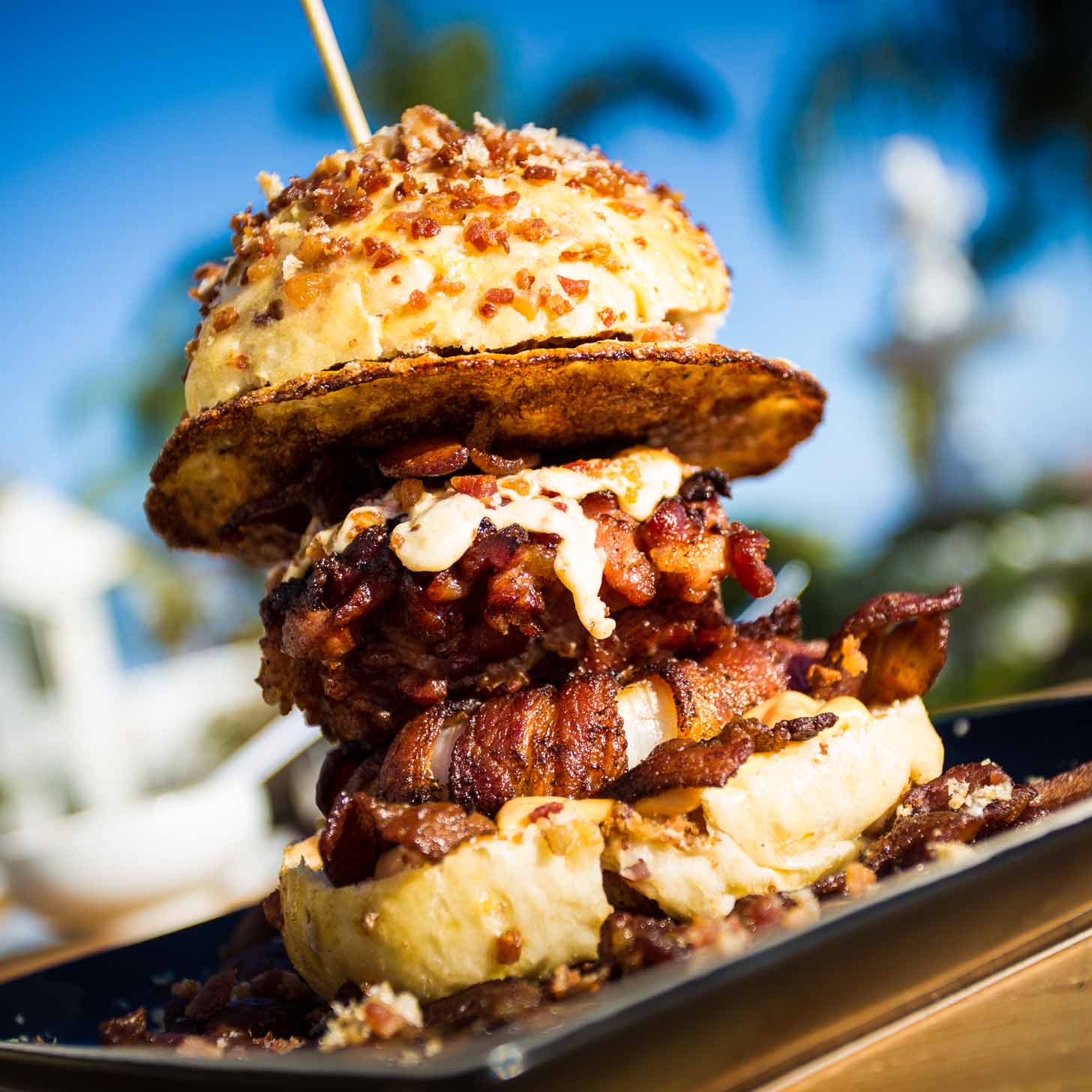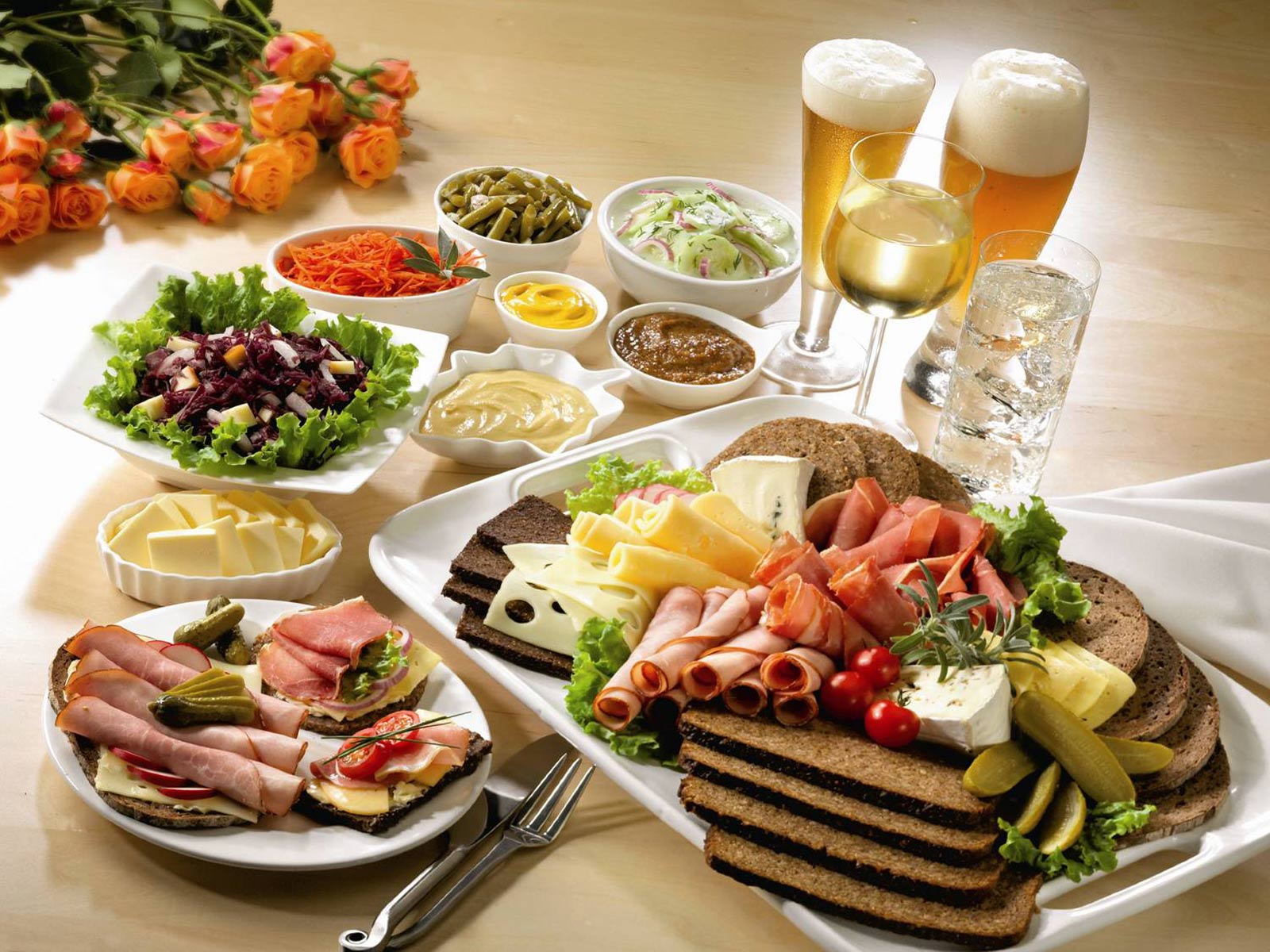Saffron is our love affair; a culinary crescendo that evokes a warmth of its own. But cooking is so much more than a single ingredient — it’s also about respect. It’s about respecting people from different cultures who dedicate their lives to creating something extraordinary with every dish they serve; family meals or five-star restaurants alike.
And that’s why we’re inviting everyone to join us – to share their recipes, explore new flavors and be part of something special. We know everyone has something delicious to offer!
For now, love yourself and enjoy this one ...
Now love yourself and enjoy this one ...
Dress up your spuds in cheese with this recipe for Scalloped Potatoes—an ooey gooey side dish that is perfect for fancy meals without taking an eternity to prepare.

Table of Contents
When I was young (so, basically, a student), I used to think I knew everything there was to know about preparing potatoes. Of course, I thought it began with french fries and ended with mashed. Then I grew up, got a job, got a house, and started entertaining friends beyond getting takeout and renting a movie. I wanted to make a nice meal but it had to be something I could afford that my guests hadn’t had numerous times already that week (so, no mac ‘n’ cheese).
This is when I stumbled upon a recipe for scalloped potatoes. It was simple and affordable and yet, when I first attempted to make it for myself, I was awestruck. It didn’t SEEM simple and affordable, which is a sign of a good dish to serve.
Granted, I’m easily swayed by anything with a layer of cheese, but even my now-husband, then-boyfriend was impressed (no easy feat, let me tell you). The potatoes were tender and flavorful, and had us wondering how this was the same ingredient as mashed potato. Don’t get me wrong: I love mashed potatoes, but everyone needs a change occasionally. If this sounds like you, then you encountered this recipe at just the right time!
Are Scalloped Potatoes Healthy?
Potatoes contain minerals and vitamins, which is good. They also contain starch and carbs, which some consider less than good. It really depends on your diet. The dish overall also contains fat, which, again, can be a selling point for some. No matter which way you look at them, these scalloped potatoes are probably best enjoyed only occasionally and not relied upon as a go-to side. It’s suitable for vegetarian diets, as well as gluten-free diets, provided the flour contains no gluten. To make it vegan and dairy-free, replace the butter with olive oil; replace the milk with almond, soy, or oat milk; and use nutritional yeast instead of cheese.
Which Type of Potato Should I Use?
When choosing your potato, you’re going to want ones that have a creamy texture to complement the cheese and milk. With that in mind, your best bets are Yukon Gold or Russet. They are both creamy and buttery. Yukons’ skins are soft, so you don’t need to worry about peeling them (Russets’ skins are slightly tougher, so peeling them or not is a matter of preference). They will also do a good job of absorbing that cream (the Russets, in particular) so the flavor remains throughout every bite. When slicing the potatoes, it’s worth getting a mandoline; you want your slices as uniformly thin as possible for even cooking.
INGREDIENTS
- 4 cups thinly sliced potatoes
- 3 tbsp unsalted butter
- 3 tbsp all-purpose flour
- 1 1/2 cups whole milk
- 1 tsp salt
- 1 dash cayenne pepper
- 1 1/2 cups grated sharp cheddar cheese, divided
- paprika (for garnish)

INSTRUCTIONS
Prep
Preheat your oven and prepare the baking dish to ensure your potatoes don’t stick.
Roux
Melt butter and blend in flour to form the base of your cheese sauce.
Season
Slowly whisk in milk and add seasoning to create a smooth, flavorful sauce.
Thicken
Cook the sauce until it reaches a creamy consistency, perfect for layering.
Cheese
Stir in the cheddar cheese off the heat to melt into the sauce seamlessly.
Layer
Assemble the potatoes and sauce in layers for a balanced texture in every bite.
Top
Add the final touches of cheese and paprika before baking to golden perfection.
Bake
Cook until the potatoes are fork-tender and the top is beautifully browned.
Serve
Let the dish cool slightly, then serve and enjoy the creamy, cheesy goodness.
Devour!

FAQs & Tips
You can totally prep them. Just make them as the recipe dictates but hold off on adding the cheese so it doesn’t get too moist in the fridge (cover it in aluminum foil or plastic before doing so). Add the cheese just before you bake it, which should be done within 24 hours of making it. You can also freeze uncooked scalloped potatoes for up to two months. Just make sure they’re covered properly and let them thaw in the fridge overnight. A tip: Let the potatoes sit out for an hour after being taken out of the fridge to promote even cooking.
So here’s the thing: This recipe is actually for scalloped potatoes. The difference is in the use of cheese; au gratin uses it whereas scalloped potatoes relies more on cream. But these days, especially in America, the two terms have been used interchangeably as many home cooks like to top their scalloped potatoes with cheddar.
Let the potatoes cool completely then cover them up or move them to an airtight container. They should keep in the fridge for up to three days. I don’t recommend freezing leftovers though. The texture and consistency of the sauce and potatoes won’t be up to snuff when you eventually thaw them out, in my opinion. I mean, you can still do it but you may want to lower your expectations for round 2.
That’s OK, though the taste and consistency will no doubt be affected. After all, the flour, along with the butter, forms the roux, which is the backbone of scalloped potatoes. So any changes to it will impact the dish overall. Whole wheat, gluten-free, almond, coconut, tapioca starch… they will all work.
Scallops are a type of shellfish. That shell is like a wavy oyster. Scalloped potatoes used to be served in scalloped-edge baking dishes (i.e., dishes with wavy edges). That tradition went by the wayside but the name stuck. There’s also the French connection (see what I did there!). The word escalope is French for thinly sliced seafood and meat, so the association is to potatoes that are thinly sliced.
If you find your oven has a nasty habit of singeing the tops of your meals, then cover it with aluminum foil for 3/4 of the cooking process. I would remove it, though, for the last bit so that they still get lovely and brown.

Serving Suggestions
Scalloped potatoes, like roasted or mashed, pair well with most entrees. What matters most, I’d say, is whether the cheese of the potatoes blends well with the sauce of your main dish (assuming you’re using a sauce). Grilled chicken, Air-Fryer Salmon, grilled ham, or Grilled Lobster Tail all provide a light dish that would balance out the heavier scalloped potatoes. Veggies like Air-Fryer Peppers and Crispy Asparagus would work nicely, thanks to how good they taste with cheese.


Scalloped Potatoes
Ingredients
- 4 cups thinly sliced potatoes Yukon Gold or Russet
- 3 tbsp unsalted butter
- 3 tbsp all-purpose flour
- 1 1/2 cups whole milk
- 1 tsp salt
- 1 dash cayenne pepper
- 1 1/2 cups grated sharp cheddar cheese divided
- paprika (for garnish)
Instructions
- Preheat your oven to 350°F. Lightly grease a 1.5-quart baking dish with butter or non-stick spray.

- In a small saucepan over medium heat, melt the butter. Once melted, whisk in the flour until smooth to create a roux.

- Gradually add the milk to the roux, whisking constantly to prevent lumps. Season with salt and a dash of cayenne pepper.

- Continue to cook the sauce on low heat, stirring frequently, until it thickens and comes to a gentle boil.
- Remove the sauce from heat and stir in 1 cup of the grated cheddar cheese until it’s completely melted and the sauce is smooth.

- Arrange half of the sliced potatoes in the prepared baking dish. Pour half of the cheese sauce evenly over the potatoes. Repeat with the remaining potatoes and cheese sauce.

- Sprinkle the top with the remaining 1/2 cup of cheddar cheese and a dusting of paprika for a touch of color.

- Bake in the preheated oven, uncovered, for approximately 1 hour, or until the potatoes are tender when pierced with a fork.

- DEVOUR!
Nutrition
The post Scalloped Potatoes appeared first on Food Faith Fitness.
References:
By: FoodfaithfitnessTitle: Scalloped Potatoes
Sourced From: www.foodfaithfitness.com/scalloped-potatoes-recipe/
Published Date: Wed, 13 Mar 2024 20:31:14 +0000
Frequently Asked Questions
Does organic mean it is pesticide-free?
Organic food is chemical-free and grown without pesticides. This means that organic food is often free of pesticides and fertilizers.
Organic produce contains more nutrients and is healthier than conventionally manufactured foods, as it does not contain any harmful additives.
The USDA National Organic Program requires that organic farming practices be followed by farmers.
These guidelines include soil preparation and crop rotation, pest management, water conservation, as well as harvesting practices.
Organic farming methods are also beneficial for wildlife and natural habitats.
What are the things to look for when purchasing organic products?
USDA-certified organic label are desirable. This guarantee that the product has met specific standards set forth by USDA. On packages, boxes, cartons or cans, look out for the USDA Organic seal.
When buying meat, make sure it is from organically fed cows. Cattle are ruminants. This means they chew the cud. Ruminant cattle have 4 stomach compartments: Rumen, reticulum and omasum. Organic feeding must be done on all organs of the animal in order to get the cow labelled organic 100 percent.
Make sure you only buy chicken from chicken farms that are fed organically and have never been given antibiotics. Omnivore chickens can eat both plants as well as animals. Omnivorous chickens have a digestive tract composed of a crop, proventriculus, gizzard, small intestine, large intestine, and anus.
You should ensure you only buy dairy products made from milk that has been produced by cows who have been fed 100% organically grown food. Just like ruminants, dairy cows also have four stomachs. Milk comes from the fourth stomach compartment--the udder.
If you are buying other types of livestock, make sure to check the label to determine the percentage of their diet. A label for pork might say "95% organic", which means that 95% of the feed used by the pork came from organic sources.
What is inorganic foods?
Organic food does not use pesticides or fertilizers. These chemicals can cause health problems in organic foods.
Organic food is free from harmful substances like pesticides and herbicides. These chemicals may cause damage to animals as well as humans.
Inorganic foods are meats, fishes, eggs, buttermilk, cheese, yogurt and honey as well as vegetables, fruits and spices.
The way that an agricultural product is grown organically is what the term means. Organic farming, for example, uses natural methods and soil amendments in order to grow crops. Conventional farming, however, uses pesticides and synthetic fertilizers.
Foods labeled as organic must meet strict guidelines by the U.S. Department of Agriculture (USDA). The National Organic Program Standards require that all organic foods are free of prohibited substances such as antibiotics and growth hormones, genetically modified organisms or industrial solvents. Additionally, organic food must be raised without toxic chemicals, petroleum-based fertilizers, sewage sludges, or ionizing radiation.
What does it mean to be an organic food producer?
Organic food producers use organic methods to grow their products. These foods include fruits, vegetables and dairy products.
When crops are naturally nurtured, organic food production can be achieved. This includes soil preparation and pest control as well as crop rotation.
For an agricultural product to be considered organic, it must meet strict criteria set out by the USDA (United States Department of Agriculture).
These guidelines are designed to ensure consumers have access to safe, healthy and nutritious food.
The benefits of eating organic range from lower levels of pesticide residues and heavy metal contamination to higher nutrient content and better flavour.
Products certified organic by the USDA must bear the label "USDA Certified Organic" seal.
This certification indicates that the product meets the requirements of the National Organic Program.
As well as ensuring that we eat healthier, organic food also helps protect our environment.
Organic farming techniques help preserve natural resources such as water and land. Organic farming also helps to reduce greenhouse gases emissions, which are responsible for climate change.
Organic agriculture uses fewer chemical inputs and pollutes less.
Because of this, harmful gases such as ammonia and even nitrates will not build up in the air.
There are many types to organic farming.
Conventional agriculture refers to the use synthetic inputs, such as pesticides/fertilizers.
Regenerative farming includes compost, cover crops, as well as green manures that improve soil health. It also encourages biodiversity.
Agroecology promotes healthy relationships between humans and plants.
Permaculture is a system that mimics nature and promotes self-sufficiency.
What is the difference in organic and non-organic foods?
Organic food is grown without the use of pesticides or chemical fertilizers, sewage effluent, radiation, or genetic modification. Organic farming practices contribute to soil health, water purity, and animal welfare.
Inorganic foods are produced using chemical fertilizers, pesticides, and sewage effluent. Irradiated foods are treated with radiation; genetically modified organisms (GMO) are created through biological engineering techniques.
The term "natural" is often used interchangeably with "organic." Natural does not necessarily have to mean organic. Natural products can also be labeled with synthetic ingredients.
Organic produce is often more nutritious than conventional produce, as the soil has fewer pesticides and harmful chemicals. Organic farmers do not use pesticides, artificial fertilizers, hormones, anti-biotics, and other harmful chemicals.
What are some of the benefits of organic agriculture?
Organic farming is a way for farmers to grow food naturally without the use chemicals. Farmers don't need to worry that harmful pesticides could harm their crops or animals.
Organic farming allows for natural fertilizers to be used. These fertilizers can be used to help grow healthier plants and to reduce the amount produced chemical waste.
Organic farming is also environmentally friendly. Farmers often use composting techniques to recycle nutrients back into the soil. This reduces pollution and preserves valuable resources.
Organic farming also helps the environment by increasing crop yields. This is because organic farming requires less water to grow the crops.
Organic production methods result in farmers receiving higher prices. Healthier foods are demanded by consumers who are more aware of the dangers posed by pesticides and chemical fertilisers.
This increases demand for organic food products. Organic farming is growing in popularity.
Organic meat is better
This question is probably answered if you've been paying close attention. However, the truth is organic food is gaining popularity at a time when conventional food is falling out of favor.
Organic foods are more appealing because they are healthier. Organic foods are also safer for our overall health and reduce pollution.
But there are two sides to this coin. Organic produce is more difficult to grow and takes more resources. This means that organic food costs more money than its non-organic counterpart.
Organic meats are generally more expensive than conventionally raised animals. There are however ways to lower these costs without sacrificing the quality of organic meats.
Local purchases can help you save money. Buy locally grown vegetables and fruits to help keep prices low. Farmers receive incentives to grow healthier crops.
Look for bargains to cut down on costs. Many organic products can be purchased at a discount.
Consuming less meat is another way to save cash. Feeding livestock can be very expensive.
While there are many reasons organic food is better for our bodies as well as the planet, we must not forget the cost.
Statistics
- Cosmetic brands such as Laurel and Rose Mira are 100 percent organic and have a wide array of skincare products. (en.wikipedia.org)
- According to a study performed by consumerreports.org, organic products, compared to non-organic products, ranged anywhere from 13 percent cheaper to 303 percent more expensive. (en.wikipedia.org)
- Once certified by the USDA, it can fall into one of four categories: "100 percent organic", "organic," "made with organic ingredients," or "made with less than 70 percent organic ingredients. (en.wikipedia.org)
- To provide the highest quality products and services to every customer, with a dedicated workforce that puts the customer first and takes the extra step to achieve 100% customer satisfaction and loyalty. (hollinsorganic.com)
External Links
[TAG38]
- Occupational Pesticide Exposures and the Cancer Risk: A Review. Journal of Toxicology and Environmental Health. Part. B. Vol 15, Issue 4.
- Genetically modified foods - safety, risks and public concern - A review - Journal of Food Science and Technology
[TAG41]
- Organic food and its impact on human well-being: ScienceDirect assesses the status quo as well as future research prospects
- Technical Note: Simultaneous vitamin and carotenoid analysis of milk from total mixed-ration-fed cows is optimized for xanthophyll detection. ScienceDirect
[TAG44]
- EWG's 2022 Buyer's Guide to Pesticides In Produce
- Clean Fifteen(tm), Conventional Produce With the Least Pesticides
[TAG47]
How To
What happens to the body when you switch over to organic products
Organic products are free from synthetic fertilizers, pesticides, hormones, and genetic manipulation. They are free-range and come from clean water sources. The term "organic" means they do not contain any chemicals or additives. This product was created by nature, and therefore does not contain harmful substances.
The term "natural", refers only to how food was grown. It's usually used to describe foods not processed into their final form (such as fruits). Natural foods are more fresh than other foods because they have not been subject to heat, radiation or chemical preservatives. Some people think natural does not necessarily mean healthy. Many experts say there isn't much difference between conventional and organic foods. Both types of food are tested for safety, quality, and purity. Organic produce is less likely to contain pesticide residues and pollutants than conventionally grown produce.
Most grocery stores offer organic options. You can find organic meat, poultry, eggs, and seafood at your local market. Some companies only sell organic products, while others offer separate sections. USDA Certified Organic, Non GMO Project Verified. Biodynamic Association Certified. Rainforest Alliance Certified.
These foods should be avoided by women who are pregnant or breast-feeding. Pesticides have been shown to harm infants and unborn babies.
 |
[TAG50]This Irish kale colcannon recipe is perfectly buttery and fluffy and easy to make with a handful of basic ingredients. St. Patrick’s Day is just around the |
 |
[TAG51]Hello hello! Just wanted to pop in with a cute little life update. ♡ I’m delighted to share that our sweet son, Milo Alexander Martin, came to join our family |
 |
[TAG52]Easy to make full flavoured recipes. Life is too short for boring food! |
 |
[TAG53]This vibrant lemony broccoli pesto pasta is quick and easy to make and full of fresh flavors. Your veggies, greens, and pasta…all in one gorgeous dish! ♡ We’re |
 |
[TAG54]This simple roasted carrot soup recipe is made with creamy tahini and topped with crispy za’atar chickpeas. Naturally gluten-free, vegetarian and vegan. If you |
 |
[TAG55]HEALTHY & KID-FRIENDLY MEALS easy dinner recipes made in minutes. The Latest Recipes st. Patrick's Day Recipes Hello! I'm Sara! Welcome to Dinner at the Zoo! |
 |
[TAG56]My longtime favorite flourless cake recipe is decadently rich and delicious, naturally gluten-free, and easy to make in under 1 hour! Trust me, this flourless |
 |
[TAG57]This vegetarian cabbage roll soup is filled with protein-rich lentils and all of the delicious flavors you love from traditional cabbage rolls. Naturally |
 |
[TAG58]From comfort foods to indulgent dishes browse hundreds of recipes that your family will love and make over and over again. Cooking Classy has never been easier, |
 |
[TAG59]These zesty roasted sweet potato and chickpea bowls are layered with sautéed spinach and brown rice and tossed with my favorite 4-ingredient chipotle tahini |
 |
[TAG60]This classic matcha latte recipe is easy to make and customize to your liking and always so delicious. The older I get, the more I’m convinced that one of |
 |
[TAG61]A family food blog with hundreds of simple, tested and approved recipes. Find easy step-by-step photo cooking instructions and video recipes. |
 |
[TAG62]This veggie-loaded broccoli cheese soup recipe is perfectly velvety and creamy without using heavy cream. Instant Pot, Crock-Pot and stovetop options all |
 |
[TAG63]This winter farro salad recipe is made with the most delicious blend of seasonal fruit, greens, nuts, crumbled cheese and tossed with a vibrant orange ginger |
 |
[TAG64]find out hundres of delicous food recipes |
 |
[TAG65]This lovely white wine sautéed mushrooms recipe is quick and easy to make, full of rich savory flavors, and can pair well as a side dish with many different |
 |
[TAG66]This traditional Swedish meatballs recipe is bursting with rich, savory flavors and topped with a creamy gravy. Always so comforting served over mashed |
 |
[TAG67]The food blog with mostly healthy recipes made with real, whole foods inspiring more people to get into the kitchen and cook something good. |
 |
[TAG68]This classic Irish coffee recipe is easy to make with 4 ingredients in just a few minutes. Always so warm and cozy! Let’s warm up with a hot mug of Irish |
 |
[TAG69]This snickerdoodle blondies recipe is irresistibly rich, buttery, tangy, and sprinkled with a crunchy cinnamon-sugar topping. Yes, they’re just as good as you |
 |
[TAG70]A food blog with hundreds of quick and easy dinner recipes. Classics done right, incredible one pot recipes, Asian takeout at home and holiday feasting! |
.png)





